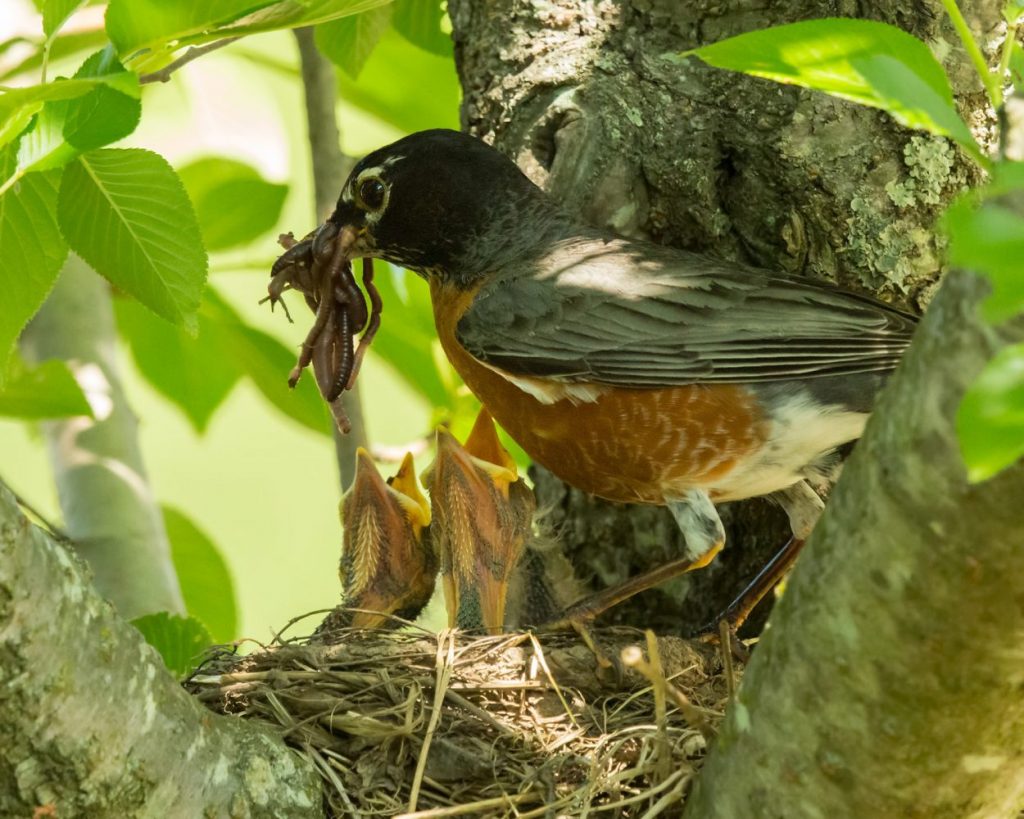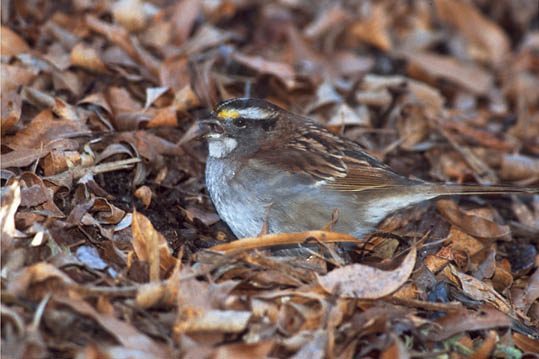Birdscaping Your Yard

Nesting boxes for eastern bluebirds have a 1.5-inch entry hole and no perch to help thwart predators.
Photo by Mark Ackerman
You check off the first step in birdscaping when you look at your yard from a bird’s point of view. More than bird baths and feeders staged here and there, birdscaping is planning and planting to not only attract, but nurture wild birds.
Megan Lacey, a horticulturist at Lewis Ginter Botanical Garden, is a birdscaper who started as a self-proclaimed “bird nerd” in her teens.
“I began to notice birds because I loved plants, nature, insects – anything outside,” the Richmond resident said. “But watching birds was unusual for my age, so I never talked about it with my friends.”
Today, Lacey eagerly chats about creating backyard sanctuaries for birds. She considers it a give-and-take process: provide the right habitat and more than likely, the birds will come.
Lacey appreciates her feathered friends’ beauty, sounds and feeding antics, but there’s another reason for her interest in bird-friendly landscapes.
“When you invite more wildlife into your yard, you’re embracing nature and helping further their kind.” Now a mother, Lacey shares her love of wild birds with her 2 ½ year-old son, who enjoys mimicking crows.
Across town, Mark Ackerman made backyard birding his profession. Fourteen years ago, on a whim, he and his wife bought YardBirds in western Henrico County.
“I’d been a customer there and found it a relaxing hobby,” Ackerman said. “Aside from pure enjoyment of watching nature in the backyard, I find it amazing that clearcuts for building are taking away so much habitat. Replacing it is a good thing to do.”
Whatever your motivation, put out the welcome mat for wild birds by providing three basics when birdscaping.
Water source: Water is essential for all wildlife, including birds. A shallow dish of water, slow-stream fountain or traditional bird bath work well if visible, clean and easy to access. Ackerman noted that most birds scoop water with their bill, then throw back their head for swallowing. They also use water to remove oil build-up on their feathers.
“Birds preen themselves constantly, because if there’s too much oil they can’t fluff properly to stay warm,” he said. “They even bathe in the dead of winter, so we [YardBirds] carry heated bird baths.” Warm-water bathing: that’s creating a bird paradise for sure!
Shelter: A habitat rich in grasses, flowering plants, deciduous as well as evergreen shrubs and trees provides nesting material and nesting sites. Leaves and branches help camouflage birds from predators. They also shelter them from wind, rain and snow. Nesting boxes and houses can be added for birds with a preference for a ready-made house, such as the eastern bluebird. Needs are specific, though, so shop with knowledge – or better yet, with a professional.
Food source: Like humans, birds love food that’s fresh, available and plentiful. Some can be picky eaters, so an assortment of seed-, fruit- and nectar-producing plants—not to mention worms—helps increase the variety of visitors. Purchased seed can be used to attract specific birds or to supplement nature’s reduced food supply during winter and early spring.

Young, hungry hatchlings keep their parents busy searching for food, which is a vital element of bird-friendly landscapes. Image by Robert Birdwall
“Don’t stop feeding birds in spring, because it’s a really stressful time for birds,” Ackerman said. “Besides burning calories to stay warm, they’re raising families and trying to feed their brood, and [most] plants haven’t gone to seed yet.” He recommended oil-rich seeds that help birds build fat, such as black-oil (non-striped) sunflower seed. Read ingredient labels to make chemicals aren’t added, since birds can be very sensitive. Also, don’t worry about creating dependence by setting up feeders. Unlike some other wildlife, birds seldom become reliant on handouts.
“If you have kids or grandkids, they’ll find birds fascinating,” Ackerman said. “In this world, kids don’t get to see nature too much, so you’re inviting nature to them.
“Then they can look them up and ID them on their iPads,” he added with a laugh.
This article first published in April 2017 in Richmond Times-Dispatch.
